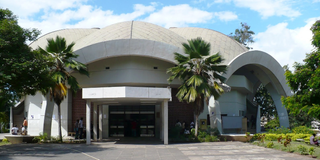UDSM signs deal as varsities embark on campus expansions

UDSM premises
What you need to know:
- The initiative is being propelled by the ongoing $425 million World Bank’s Higher Education for Economic Transformation (HEET) project—a five-year programme poised to be a catalyst for the new Tanzanian economy.
Da es Salaam. Universities around the country are setting out on an ambitious mission to enhance the teaching and learning environment and broaden access to higher education.
The initiative is being propelled by the ongoing $425 million World Bank’s Higher Education for Economic Transformation (HEET) project—a five-year programme poised to be a catalyst for the new Tanzanian economy.
HEET’s central focus lies in improving educational infrastructure to facilitate modern and effective teaching and research while ensuring the highest training standards for lecturers, researchers and university administrators.
The University of Dar es Salaam (UDSM), one of the country’s leading institutions, has taken a significant step forward in this transformative journey.
UDSM on Thursday signed a crucial construction supervision contract with two prominent companies, M/s Arqes Africa Architects & Interior Designers Limited and M/s Geometry Consultants Limited, tasked with overseeing the construction of 21 new campus buildings.
This strategic move aligns perfectly with the government’s directive to establish major university campuses in underserved areas, thereby broadening educational opportunities nationwide.
UDSM is a proud beneficiary of the World Bank’s HEET project, having received $47.5 million out of the total.
The World Bank states that these funds will be used for a variety of educational advancement initiatives aimed at enhancing the academic environment, such as modifications to teaching and learning strategies made in response to the needs of rapidly advancing economic knowledge and technological innovation.
One of the project’s core objectives is to fortify the learning environment and align priority programmes with the labour market requirements of the participating higher education institutions.
The chairperson of the UDSM Council, Mwanaidi Maajar, underscored the council’s unwavering commitment to closely monitoring the project’s implementation.
She emphasised the pivotal role of professionalism and integrity in ensuring that the project is executed efficiently and adheres to the stipulated timeline.
“Using its various instruments, The Council shall guarantee the execution of this project with professionalism and integrity to ensure that the implementation is completed on time, according to the time set,” she said.
UDSM’s Vice Chancellor for Planning, Finance, and Administration, Prof Bernadeta Killian, offered a detailed perspective on the focus areas of the HEET project.
Prof Killian stated: “The university is implementing the project through national priority fields that include engineering and technology, ICT, urban planning, environmental engineering and technology, agriculture and agribusiness, and tourism and hospitality.”
She further highlighted the completion of the building designs and the engagement of guidance counsellors to oversee the construction in Dar es Salaam, Lindi, and Zanzibar.
The project extends its reach to other universities as well. For instance, Muhimbili University of Health and Allied Sciences (MUHAS) is set to establish the Mloganzaila campus with a capacity to accommodate 11,000 students.
Similarly, the Sokoine University of Agriculture (SUA) is gearing up to open the Mizengo Pinda campus in Katavi, designed to house 2,500 students.
Furthermore, the Mbeya University of Science and Technology campus in Rukwa will offer space for 3,000 students.
In a nation where higher education enrolment has lagged behind neighbouring countries, the World Bank has estimated that the annual demand for university education in the country is projected to soar to over 500,000 students by 2030.
Approximately 80 percent of HEET’s funding is dedicated to increasing admissions and enhancing the quality of education in 14 higher learning institutions across the country.
With a government forecast anticipating a demand for at least 482,000 additional places in higher education by 2030, the urgency to expand university education became paramount.
In response, the ministry of Education directed public universities to establish higher education facilities in areas where such opportunities had been scarce.
The Minister for Education, Science, and Technology, Prof Adolf Mkenda, elaborated on the project’s comprehensive scope. He indicated that it will facilitate the construction of new campuses in satellite cities such as Kagera, Tanga, Kigoma, Shinyanga, Mwanza, Simiyu, Ruvuma, Manyara, and Singida.




